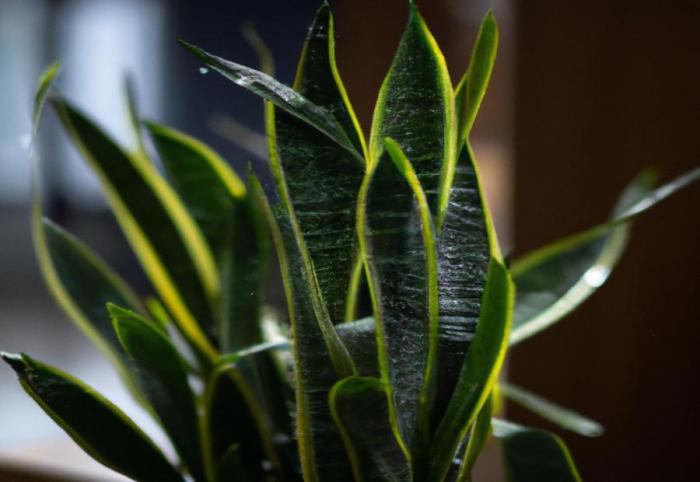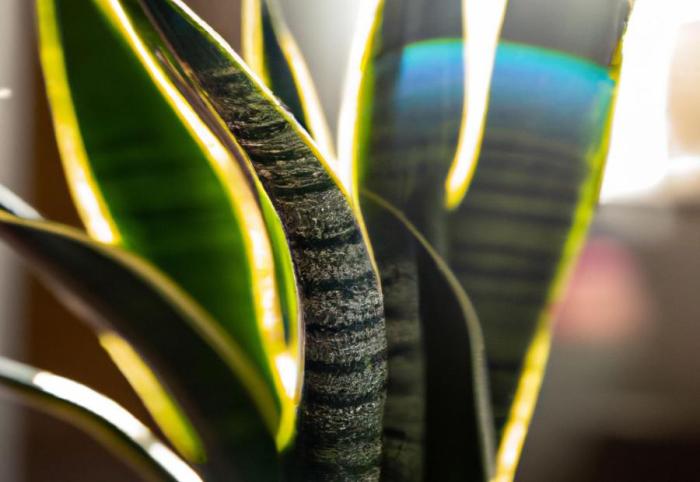How Often Do You Water a Snake Plant?
Watering Snake Plants: A Comprehensive Guide: How Often Do You Water A Snake Plant
How often do you water a snake plant – Snake plants, known for their resilience, still require proper watering to thrive. Understanding their watering needs throughout their life cycle and adapting to environmental factors is key to maintaining healthy, vibrant plants. This guide provides a detailed overview of watering snake plants, covering various aspects from growth stages to seasonal variations.
Watering Frequency Based on Growth Stage, How often do you water a snake plant

Source: allotinabox.com
The watering frequency for snake plants varies significantly depending on their growth stage. Seedlings, mature plants, and dormant plants have different water requirements.
| Growth Stage | Recommended Watering Frequency | Signs of Underwatering | Signs of Overwatering |
|---|---|---|---|
| Seedling | Water when the top inch of soil is dry, approximately once a week. | Wilting leaves, dry soil, slow growth. | Yellowing leaves, mushy stems, foul-smelling soil. |
| Mature | Water thoroughly when the top 2-3 inches of soil are dry, usually every 2-4 weeks. | Slightly droopy leaves, dry soil, leaf tips turning brown and crispy. | Yellowing lower leaves, soft or mushy leaves, root rot. |
| Dormant (Winter) | Reduce watering significantly; water only when the soil is completely dry, potentially once a month or less. | Significant wilting, very dry soil, leaf drop. | Yellowing leaves, root rot (less likely due to infrequent watering). |
Environmental factors like intense sunlight, high temperatures, and low humidity can increase the frequency of watering, especially during the active growth stages (spring and summer). Conversely, low light, cool temperatures, and high humidity can reduce the need for frequent watering.
Snake plants are remarkably drought-tolerant; watering them once every two to three weeks is usually sufficient, depending on the environment. It’s interesting to consider that, while we focus on the watering schedule, the question arises: can water plants move? You can find out more about this fascinating topic here: can water plants move. Returning to snake plants, infrequent watering helps prevent root rot, a common problem for these resilient houseplants.
Watering Methods and Techniques
Several watering methods can be used for snake plants, each with its own advantages and disadvantages.
- Top Watering: Pouring water directly onto the soil surface. This is simple but can sometimes lead to uneven watering and potential for soil compaction.
- Bottom Watering: Placing the pot in a tray of water, allowing the plant to absorb water from the bottom. This ensures even hydration and reduces the risk of overwatering.
- Soaking: Thoroughly soaking the soil until water drains from the drainage holes. This method is less frequent but ensures deep hydration.
Bottom watering is generally recommended for snake plants due to its effectiveness in preventing overwatering and promoting healthy root development.
Step-by-Step Guide for Bottom Watering:
- Fill a tray or container with lukewarm water.
- Place the snake plant pot in the tray, ensuring the water level reaches about one-third of the pot’s height.
- Allow the plant to soak for 30-60 minutes, or until the top inch of soil feels moist.
- Remove the pot from the tray and allow excess water to drain completely.
Signs of Underwatering and Overwatering

Source: growingvale.com
Recognizing the signs of underwatering and overwatering is crucial for maintaining a healthy snake plant.
Underwatering: Leaves become dry, brittle, and may curl or droop. The soil will be completely dry. The plant may show stunted growth.
Overwatering: Leaves may yellow, become soft or mushy, and may exhibit root rot. The soil will be constantly damp and may have a foul odor.
- Underwatering Symptoms: Dry, brittle leaves; curled or droopy leaves; dry soil; stunted growth.
- Overwatering Symptoms: Yellowing leaves; soft or mushy leaves; foul-smelling soil; root rot.
Addressing underwatering involves thoroughly watering the plant until water drains from the drainage holes. For overwatering, remove the plant from the pot, trim away any rotten roots, repot it in fresh, well-draining soil, and reduce watering frequency.
Soil Type and Potting Mix Influence

Source: allotinabox.com
The type of soil and potting mix significantly influences the watering needs of a snake plant. Well-draining soil is crucial to prevent root rot.
| Potting Mix | Water Retention | Drainage | Suitability for Snake Plants |
|---|---|---|---|
| Cactus & Succulent Mix | Low | Excellent | Highly Suitable |
| Standard Potting Mix (amended) | Medium (with added perlite) | Good | Suitable with amendments |
| Coco Coir Based Mix | Medium-High (depends on mix) | Good to Excellent (depending on added perlite/pumice) | Suitable with good drainage amendments |
Adding perlite, pumice, or coarse sand to a standard potting mix improves drainage and aeration, making it more suitable for snake plants.
Seasonal Variations in Watering
Watering frequency should be adjusted according to the season. During the warmer months (spring and summer), the plant’s growth is more active, requiring more frequent watering. In cooler months (autumn and winter), the plant’s growth slows down, requiring less frequent watering.
A snake plant experiencing improper watering during summer might exhibit significantly droopy, yellowing leaves, especially the lower ones, indicating overwatering. In winter, the same plant might show severely shriveled, brown-tipped leaves, indicative of underwatering. The soil’s condition—soggy versus bone dry—further confirms the watering issue.
Container Size and Material Effects
The size and material of the container also affect watering frequency. Smaller pots dry out faster than larger pots, requiring more frequent watering. Terracotta pots are porous and allow for better evaporation, requiring more frequent watering than plastic or glazed ceramic pots.
| Container Size | Container Material | Recommended Watering Frequency |
|---|---|---|
| Small (under 6 inches) | Terracotta | Every 7-10 days (depending on environmental factors) |
| Medium (6-10 inches) | Plastic | Every 10-14 days (depending on environmental factors) |
| Large (over 10 inches) | Glazed Ceramic | Every 2-3 weeks (depending on environmental factors) |
General Inquiries
Can I use tap water for my snake plant?
Ideally, use filtered or room-temperature water. Tap water may contain minerals that can harm the plant over time.
How do I know if my snake plant needs repotting?
Roots growing out of the drainage holes or significantly slowed growth are signs it may need a larger pot.
My snake plant’s leaves are yellowing. What should I do?
Yellowing leaves can indicate overwatering, underwatering, or root rot. Check the soil moisture and root system for signs of damage.
What is the best type of soil for a snake plant?
A well-draining potting mix, such as a cactus and succulent blend, is ideal.




















